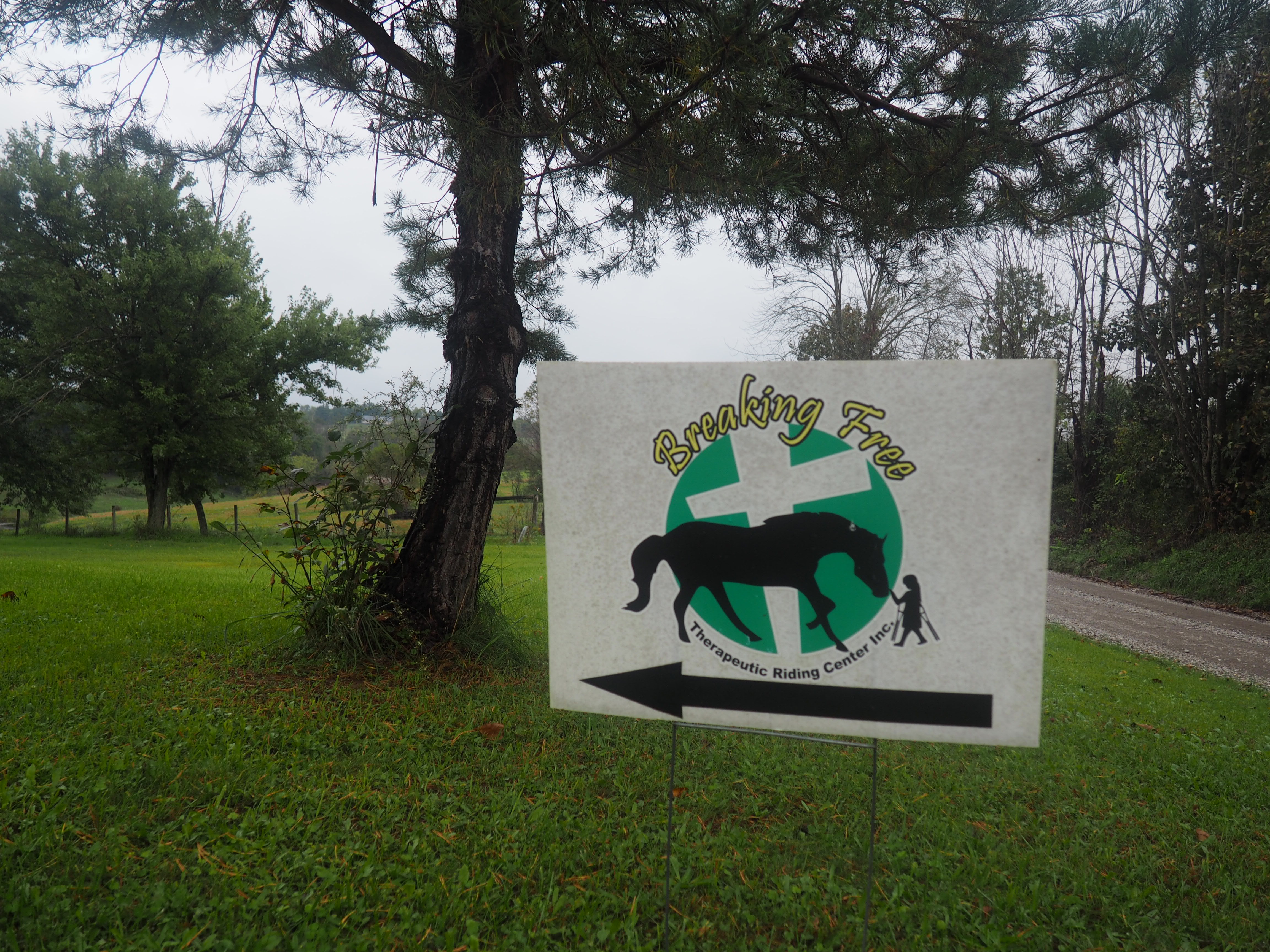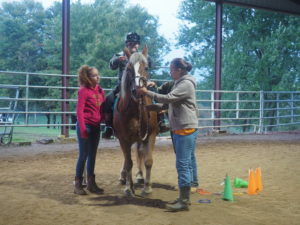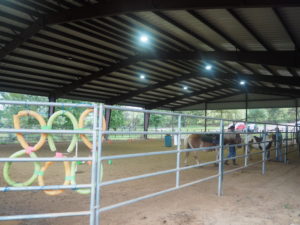
In Norwich, Ohio, the Breaking Free Therapeutic Horse Riding Center is dedicated to helping children with disabilities, children in the foster care system, and veterans overcome their personal obstacles, meet their goals, and practice self-awareness through horseback riding.
Linda Lake, founder and director of Breaking Free, established the horse-riding center in 2008 after she realized there weren’t many after-school activities available for children with disabilities.
“I started Breaking Free as a God-given mission. I felt like he was guiding me to get it started because we didn’t have anything like this in southeastern Ohio,” she says. “I worked in a school district, and I saw a lot of kids who needed some extra-curricular activities, so I started researching how equine therapy was beneficial to them.” 
Lake quickly realized Breaking Free could be more than a recreational activity, so she applied for a certification from Professional Association of Therapeutic Horsemanship (PATH) International. Once Lake was certified, Breaking Free began to focus on the therapeutic benefits of horse riding, including physical, emotional and mental wellness.
Courtney Blaney, a volunteer coordinator and instructor at Breaking Free, works with the physical therapists, social workers and counselors of each child to develop individualized plans for setting and meeting goals. Some goals are physical, while others are verbal. It just depends on the child.
“Horseback riding focuses on core strength and fine motor skills. If we know their goal is to sit up at the dinner table with their family, the instructor will encourage them to sit up on their own on the horse and engage those core muscles,” Blaney says. “Some children are nonverbal, so their goal would be to express themselves verbally through commands like ‘walk-on.’ Horseback riding actually triggers the part of the brain that’s responsible for speech, so while they’re riding the horse, it’s a perfect time to try and say these words.”
Lake remembers the first time a rider said his very first words.
 “When we first started out, we didn’t know it would happen as quickly as it did, but within the first year, we had a little boy speak who had never spoken before,” Lake says. “He got out of the car, walked over to his horse and for the first time he said, ‘Well, hello there,’ and just about floored his mom and all of us. It pulled it out of him because he was so excited to see his horse.”
“When we first started out, we didn’t know it would happen as quickly as it did, but within the first year, we had a little boy speak who had never spoken before,” Lake says. “He got out of the car, walked over to his horse and for the first time he said, ‘Well, hello there,’ and just about floored his mom and all of us. It pulled it out of him because he was so excited to see his horse.”
To Blaney, the relationship between rider and horse is especially important to having a successful lesson and experiencing personal growth.
“A lot of people come into this thinking they want to be the dominant person and just tell the animal what to do, but horses don’t respond like that,” she says. “You don’t learn anything about yourself by just telling somebody else what to do, horses included. That’s why it’s important for me and the other instructors to make sure the kids know this is a partnership.”
Of the 75-80 riders Breaking Free has seen this year, about 60 percent of them have autism. Other common disabilities include Down syndrome and cerebral palsy.
But Shay Norman, 10, has cerebellar hypoplasia—a rare disease that caused him to lose part of his cerebellum, the
part of the brain responsible for coordinating muscle activity, at birth. He’s been riding at Breaking Free for five years now, and his father, Michael, is proud of the progress his son has made over time.
“He used to be in a different saddle, but now he’s graduating to an instructor holding his back,” Michael says. “It doesn’t feel like therapy here. [Shay] enjoys it; it’s his own thing.”
Shay and the other children with disabilities at Breaking Free are only one part of the operation. Through its Horses for Heroes program, Breaking Free also helps veterans who experience post-traumatic stress disorder or other trauma. Blaney recalls one veteran who lost her leg and went through a divorce in the same year, so she turned to the horse-riding center for healing. She soon found more than just a therapeutic experience—she found freedom.
“Freedom would probably be the word I use when I describe Breaking Free,” Blaney says. “It makes the riders feel like they can do anything.”
